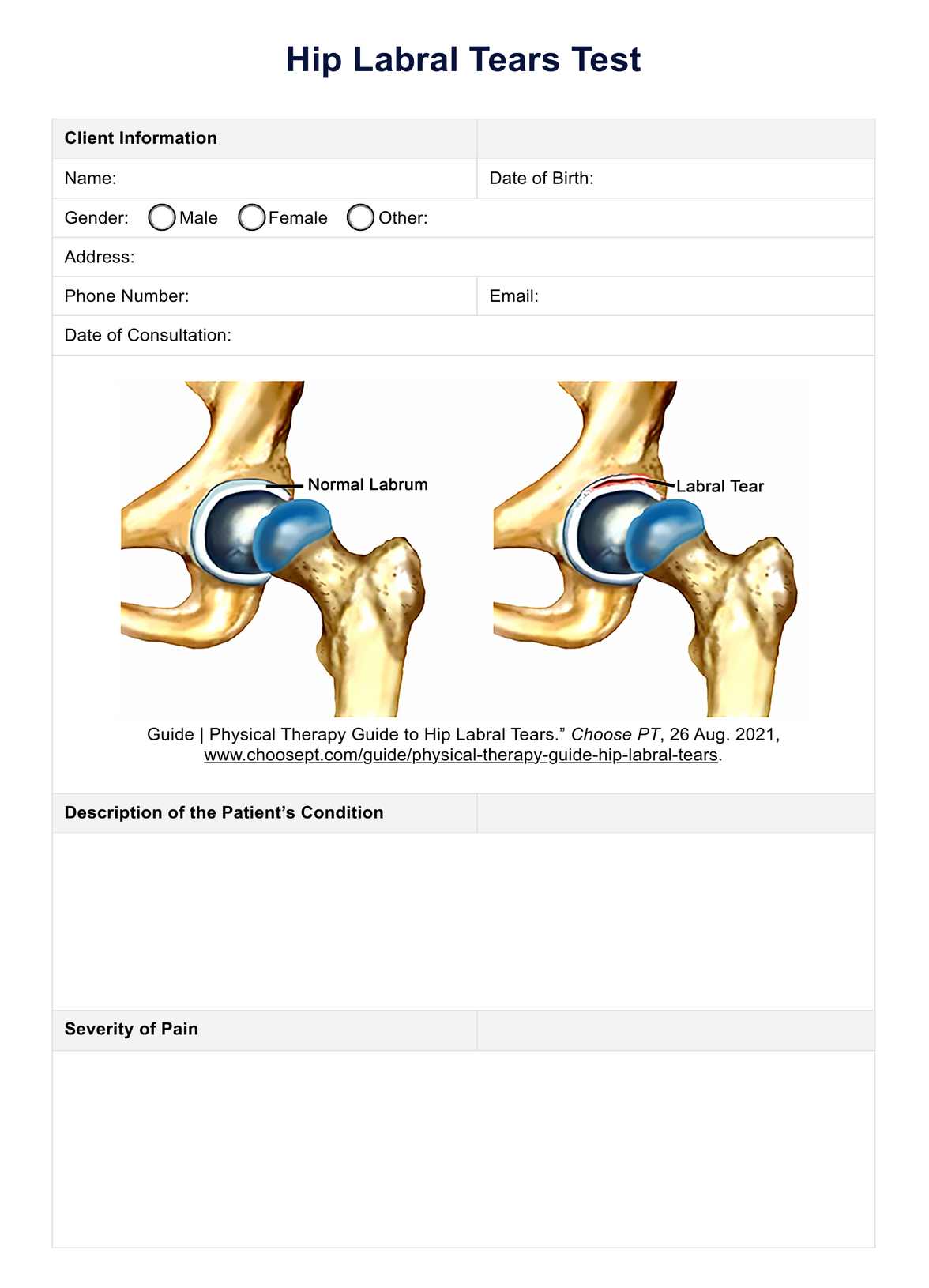Athletes who participate in sports that involve repetitive hip motions, such as hockey, football, and soccer, are at increased risk for hip labral tears. However, anyone can develop a hip labral tear due to trauma or overuse.

Hip Labral Tears Test
Looking for information on hip labral tear tests? Learn about the different diagnostic exams used to identify this injury and get a proper diagnosis.
Use Template
Hip Labral Tears Test Template
Commonly asked questions
The symptoms of a hip labral tear may include pain in the hip or groin, clicking or catching sensations in the hip joint, and stiffness or limited range of motion in the hip.
A hip labral tear is typically diagnosed through a combination of physical examination, imaging tests (such as an MRI or CT scan), and diagnostic injections.
EHR and practice management software
Get started for free
*No credit card required
Free
$0/usd
Unlimited clients
Telehealth
1GB of storage
Client portal text
Automated billing and online payments











